How to choose a pizza pan?
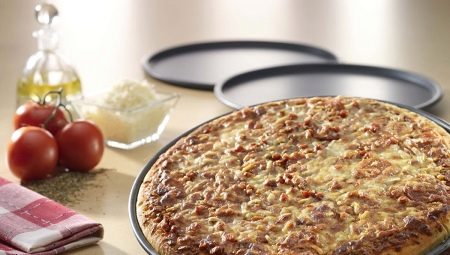
Pizza is one of the most popular dishes, which, at first glance, everyone can learn how to make. However, in fact, there are a lot of pizza recipes - there are both simple and very complex ones. The process of making the classic Neapolitan pizza (variations of it are usually served in restaurants under the name "Margarita") has been included in the UNESCO Intangible Cultural Heritage List. Not the dish itself, but the process - from preparing the ingredients to serving, and the form in which the pizza is baked is of great importance in it.
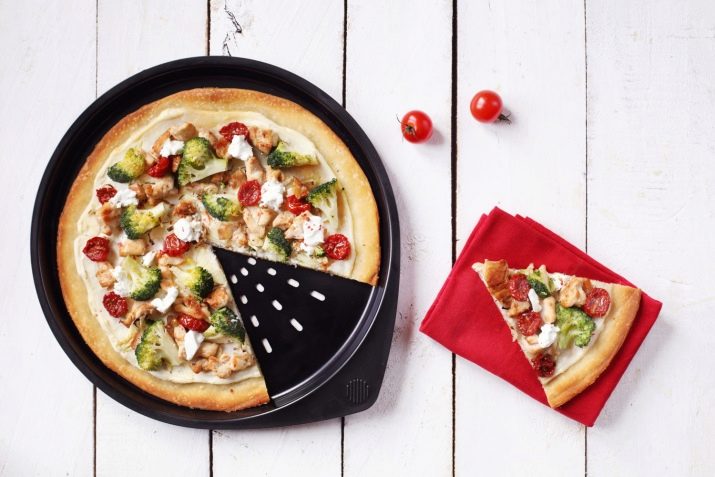
Peculiarities
Neapolitan pizza, for example, is baked on a wooden baking sheet in a stone oven, but at home you can limit yourself to simpler options. Cookware stores offer a wide variety of dishes for baking and baking using a conventional kitchen oven.
Flame retardant materials are commonly used to make these cookware to avoid fires or melting in gas ovens.
For a standard pizza, of course, a round shape is more suitable, although if desired, it can be made rectangular - this plays a big role. The popularity of the circle here is due only to the tradition of Italian craftsmen. And the most popular sizes are 25, 30 and 35 cm.
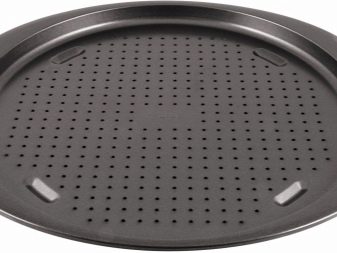
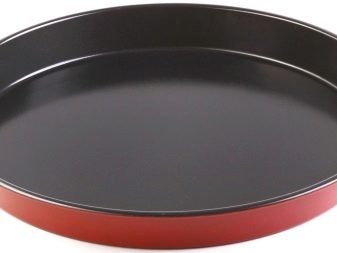
Materials used
Pizza molds can be made from different materials. Each has its own characteristics and features of choice.
Metal
Any metal dish should be chosen very carefully, as its inadequate characteristics can easily destroy your dish. First of all, you should pay attention to the presence of a non-stick coating, the height of the sides, the type of alloy.
Usually steel, aluminum and cast iron are used to make cookware.Cast iron is easily recognizable by its large weight - such a large shape is not easy to hold in fragile hands, but, perhaps, this is where its disadvantages end. This is the best option when uniform heating is required - cast iron has a very high thermal conductivity. On such a form, it is not even necessary to have a non-stick coating or bottom perforation.
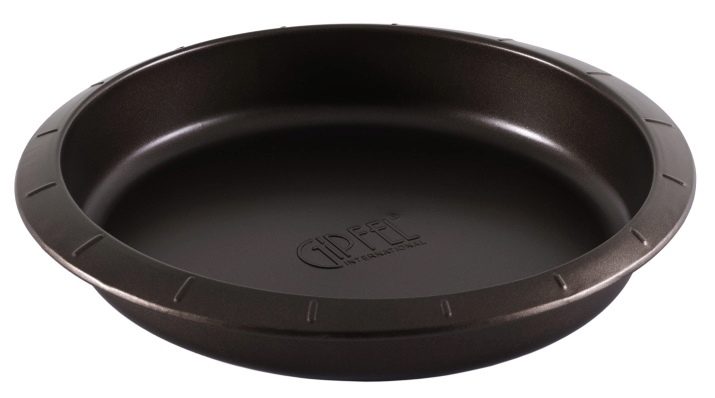
And in the case of steel, a non-stick coating is imperative, otherwise it will be difficult to keep track of the pizza.
Here it is desirable to have a perforated bottom, although you can do without it.
When choosing an aluminum mold, remember that this material has a very high thermal conductivity and heats up quickly. The latter greatly distinguishes it from cast iron, so it will bake pizza much faster on it than on any other material. The disadvantage of this option is that any aluminum things bend easily, so you need to handle them carefully.

Ceramic
Forms from this material are even more whimsical to use. Ceramic is a brittle material and can crack at the slightest impact on a hard surface.
However, such a form can be placed not only in the oven, but also in the microwave, and it also warms up evenly and even retains heat for some time.
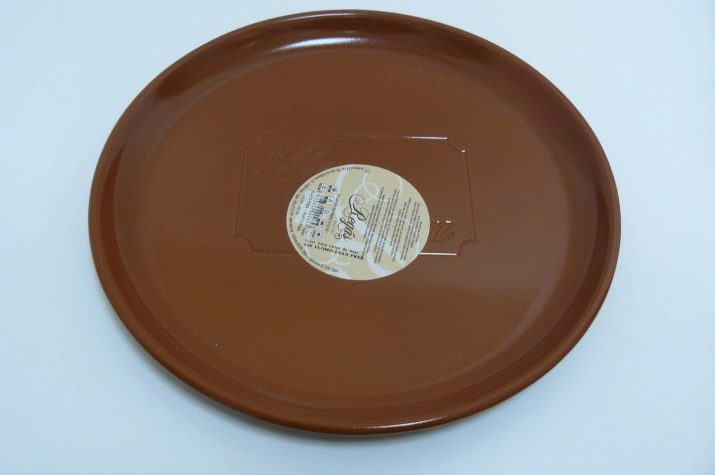
Therefore, the ceramic dish can be used to serve food on the table. Often such forms are produced in small sizes - 200 mm.
Glass
When choosing a glass form, be sure to pay attention to the type of material. It must be fireproof glass, and not just a dish of a suitable shape and size. Like ceramics, glass can maintain the temperature of the finished pizza for some time, and also allows you to control the stage of cooking through transparent walls so that it does not burn.
But you need to handle this form very carefully.
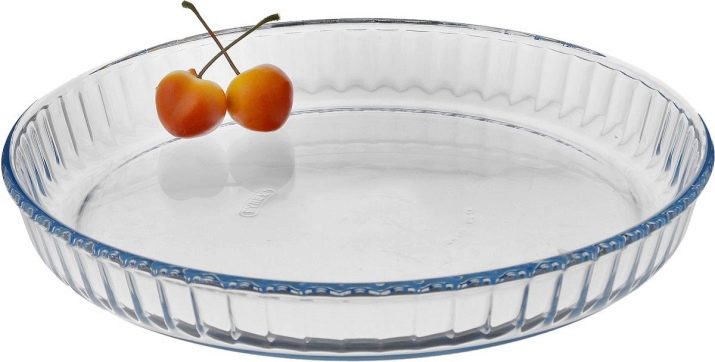
Silicone
Recently, silicone molds have been gaining popularity. This is not surprising, because unlike all other materials, silicone is flexible and allows you to easily take out baked goods. However, it is highly undesirable to cook large pizzas of 40, 45 and 50 cm in silicone molds. Silicone simply cannot heat evenly over the entire surface of the pizza.

Varieties
Sometimes baking dishes can have some peculiarities. Some may have perforation, for example. Holes in the form of small holes are sometimes made in steel and aluminum molds. This is good for the dough to bake faster and the bottom of the pizza to be crispy. It usually does not form on a baking sheet without holes, as this requires air access.
When choosing such a form, be sure to check for the presence of a non-stick coating not only inside, but also on all surfaces of the holes, otherwise the dough may get into them and burn.

And in order to prevent it from flowing out, be sure to use only a thick consistency.
The conical shape is interesting in its solution. For such pizzas, special forms are made, in which the dough is put, baked, and then the filling is reported. The result is a pizza in the shape of an ice cream.
It is convenient to eat, since your hands do not get dirty, it is convenient to take it with you, no separate dishes are required - you can wrap the cone in a napkin. This pizza has already gained popularity among Europeans as the original version of street fast food.
For restaurants, special cone pizza presses and ovens, but you can also do it at home.
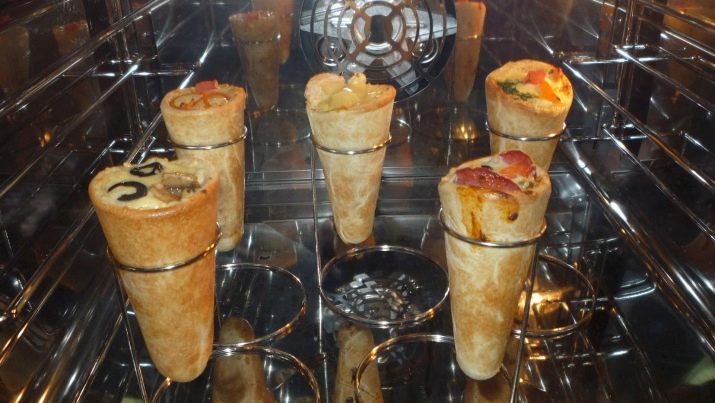
However, then you will need a non-stick stand that will support the cups in the oven. Otherwise, the filling may simply leak out.
Reviews
Most consumers in their reviews of the non-stick mesh pan note its convenience, high speed of pizza preparation and good frying. However, in such forms with holes it turns out to make only thin pizza. For pizza with fluffy dough, it is advised to take the usual form.
Disadvantages are noted for baking trays made of aluminum and thin carbon steel - they are short-lived compared to cast iron. It is also recommended to use baking parchment or similar, as these baking trays do not have a non-stick coating. Or you can use the professional secret of the chefs - grease the mold with margarine so that the pizza does not burn and stick. It does not provide a lot of fat and does not spread like vegetable oil.
For an overview of the pizza dish, see below.








